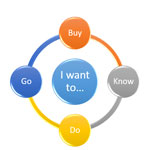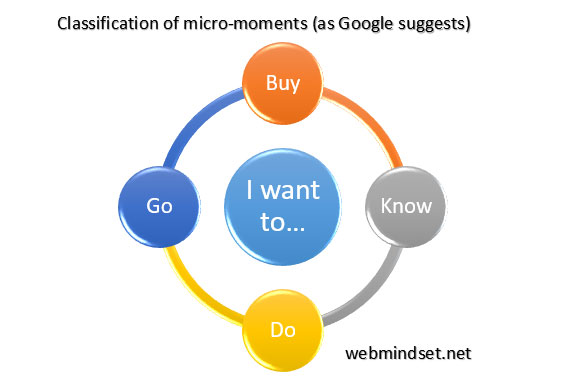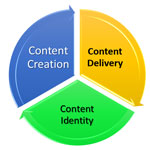Micro-moment is a concept proposed by Google in 2015 in a report issued to help online businesses adapt themselves to the new digital economy shaped by mobile web browsing.
Here you can download the document:
Micro-Moments: Your guide to winning the shift to mobileAt least, part of the Google’s motive behind releasing such a document is easy to guess. Although Google search will keep its critical role in the mobile era, the Google advertising services seem to be less important than before. The vast empty sidebars dedicated to the AdSense program in desktop screens are not available in small and tight mobile screens anymore.
As it is expected, through the document Google has emphasized the importance of Google advertising services in post-desktop world implicitly and explicitly.
A brief definition of the micro-moment concept
Here you can find the definition Google offers for the concept:
These are the moments when we want help informing our choices or making decisions. For marketers, these moments are an open invitation to engage. And they’re the moments you have to be ready for. At Google, we call these micro-moments. They’re the moments when we turn to a device—often a smartphone—to take action on whatever we need or want right now
The critical characteristics of micro-moments
Google considers three main distinct characteristics for all micro-moments:
- loaded with intent
- based on immediacy
- context-dependency
To make it short, let’s suppose that you have a question in mind and decide to use your mobile phone hoping to find a helpful answer. There on your mobile screen, all of the businesses that can fulfill your need enter in a tight competition for a few seconds. Either you will find them, or they will lose the opportunity. That’s the central theme micro-moments are talking about.
Classification of the user needs according to the micro-moments model
Here’s the core concept of micro-moments model: According to google, user demands can be classified into the four main categories.
It means most of the user demands from the mobile phone will fall within one of the following categories:
- I want to buy something [and how can you help me?]
- I want to go somewhere [and how can you help me?]
- I want to do something [and how can you help me?]
- I want to know something [and how can you help me?]
From here on, Google starts promoting its online advertising platform and tries to tell you that how its services can help you to survive, or thrive, in the tight, competitive mobile economy.
Strategic and operational implications
Putting aside all injected and embedded promotional materials, Google’s micro-moment concept can be helpful in many ways for online businesses, strategically and operationally.
From the operational point of view, you can ask yourself whether your website or application fulfills the above need in the most convenient way? This operational perspective is what I have referred to as content usefulness, in describing the concept of landing page experience.
And, from the strategic point of view, you can assess your strategic position in the market. Are you adhered to responding one of the above needs? Or you are trying to fulfill all of them in some ways which will inevitably lead to sandwiching between more strategic businesses that have focused on a single axis.







